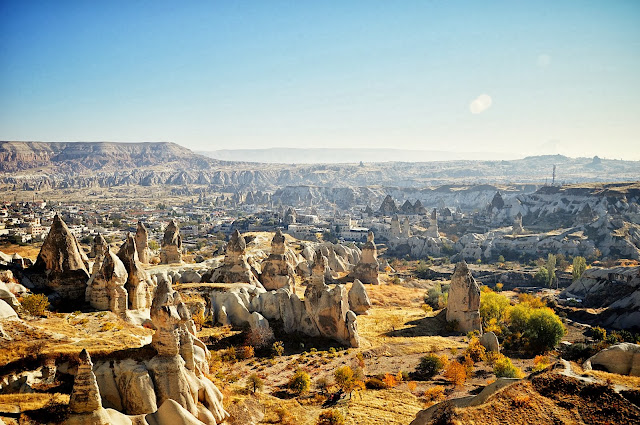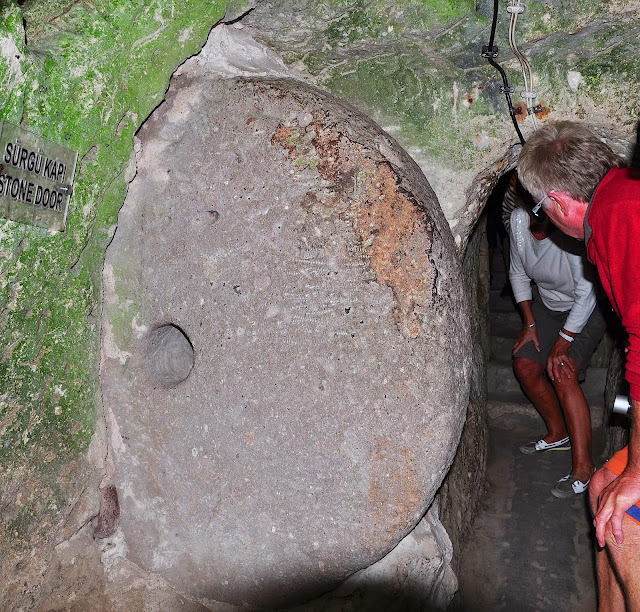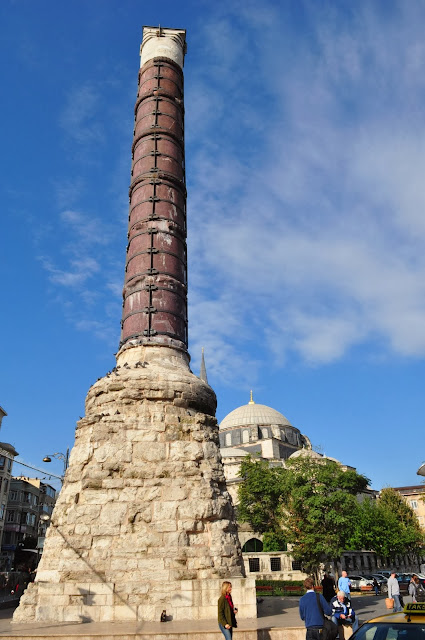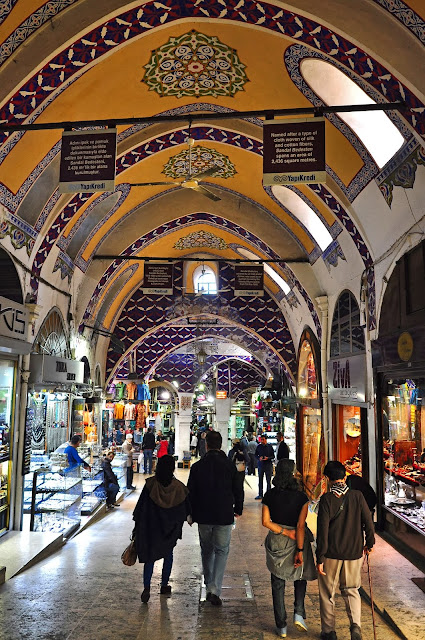After spending a few days in Istanbul, Mark and I flew to Kayseri, Turkey and from there took a 45 minute shuttle ride to Urgup which is located in central Turkey. The region is called Cappadocia and is unlike any other place on earth. Millions of years ago, the three surrounding volcanoes spewed 300 feet of lava and ash over this landscape. Tuff, as it is called, was compacted down and then the volcanoes spewed basalt which spread out over the tuff. Through erosion, pillars were formed with basalt caps on top. They are called the fairy chimneys of Cappadocia.
One of the volcanoes
Because the tuff was so easy to dig into versus building a home, people as early as the 7th or 8th century BC, and perhaps earlier still, came to this region and made caves to live in. Recent discoveries had uncovered evidence of troglodytes (cave dwellers) who dug downward rather than horizontally. More than 40 underground cities have been discovered and some of these cities were 8 or more levels down and were home to 20,000 or more people. It is believed that early Christians used these underground cities, but it is not known if they actually dug them, or they simply moved into the cities that others had dug.Our first morning there, we awoke at 5:00 and headed over to a nearby hot air balloon ride company. I was quite uneasy about taking this sort of adventure, especially in a foreign country. But I have to say that it was so amazing!
Our balloon held about 20 passengers
Sunrise
There were over 70 balloons in the air that day
This is called Love Valley - 'nuff said
If you look closely at the hillside just right of center, you can see a horse carved into the hillside. In this valley, the dirt has the same type of nutrients that Kentucky has. It makes for really good grass which in turn makes really strong bones in horses.
We toasted our safe return with cherry juice
Our pilot and I
This is a dwelling place (above) and our hotel (below). The back of our hotel was carved into the mountain.
Goreme Open Air Museum - a UNESCO Heritage Site
The Dark Church. I was disappointed that we could not take pictures inside. There were the remains of beautiful frescoes on the walls and ceilings.
Our guide explained that all of these churches were INSIDE the mountain at one time, hidden from view. Time and erosion have made them visible from the outside.
The region has over 700 Byzantine-era churches, formerly hidden from public view, many with frescoes
The fresco below was on a dome carved inside one of the many churches we saw. It is Jesus sitting on His throne of glory after the resurrection. There were many other scenes depicting his life on the walls.
This is a long table with long benches on either side all cut from the existing stone
The fairy chimneys
This one looked like a rabbit
The one above our heads looks like a snail!
Overlooking one of the valleys.
We ordered a bowl this man will hand paint in the design that is on this plate.
We explored Derinkuyu, one of the underground cities, and descended 18 stories down, Many of the passageways were very tight and narrow to slow down attackers. Not a place for claustrophobes.
Millstone set in a groove so it can be rolled to block the passageway from enemies
A larger meeting room with double arches
Back above ground, we visited several monasteries and other religious sanctuaries that were hidden from public view until erosion removed the outer covering of rock.
Photography of the most beautiful and best-preserved frescoes is forbidden because people apparently can't be trusted not to use their flash, which would damage the art. These were nice and very interesting, but not the best.
You can see the outer rock that had previously extended over the dwellings. Unwitting passersby would have no idea there were large communities hidden from view. The indentations in the walls were for pigeons or doves. They raised them and used their excrement for fertilizer. This valley has many orchards and vineyards.
These rock formations were the inspiration for some of the settings in one of the Star Wars movies. It was not actually filmed here because they couldn't get permission.
We were led on a hike through the beautiful Ihlara Valley
We saw these juicers everywhere in Turkey
Enjoying some fresh squeezed pomegranate juice
Our guide, Sekran, for the two days we were there.
We flew back to Istanbul, spent the night at the airport hotel, and returned home the following day. It was such an amazing trip!














































































